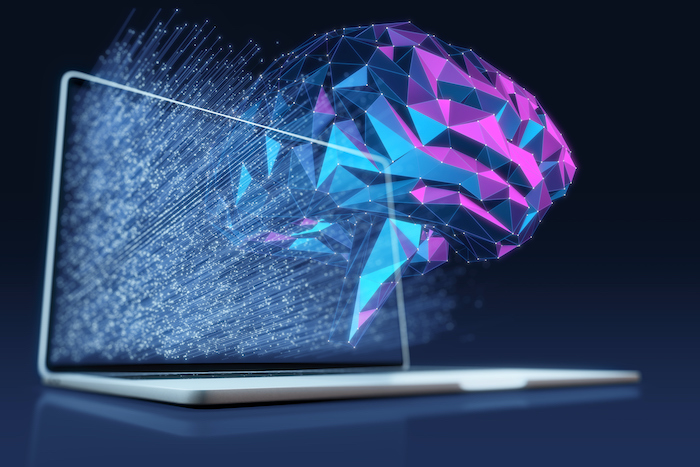The world of technology is advancing at an unprecedented pace, with each passing year bringing new innovations that reshape the way we live and work. As we approach the year 2024, it’s crucial to take a closer look at one of the most significant technological advancements and trends on the horizon: edge computing.
Edge computing is poised to revolutionize data processing and storage, offering lower latency, improved real-time capabilities, and transforming various industries. By 2026, the market for Edge Computing is estimated to be valued at $317 billion, with its footprint expected to expand to 21.7% by 2028.
In this article, we’ll explore the growing importance of edge computing in 2024 and its impact on sectors such as the Internet of Things (IoT), autonomous vehicles, healthcare, and more.
Edge Computing: A Primer
Edge computing represents a fundamental shift in how we process and manage data. Traditionally, data was sent from remote devices to a centralized data center or cloud for processing and storage. This approach, while effective, comes with inherent delays, especially when real-time processing is crucial.
The concept of edge computing, on the other hand, brings the data processing closer to the data source, often right on the “edge” of the network, where devices are located. This decentralized model significantly reduces latency and offers a host of advantages.
Applications of Edge Computing in 2024
Internet of Things (IoT)
IoT devices, such as smart sensors and cameras, generate vast amounts of data. With edge computing, data can be processed locally on these devices, enabling real-time decision-making. For example, in a smart city, edge computing can analyze traffic data at intersections to optimize traffic flow without the need to send data to a distant server.
Autonomous Vehicles
Self-driving cars require split-second decisions based on sensor data. Edge computing allows these vehicles to process data on-board, making instant decisions about navigation, obstacle detection, and more.
Healthcare
Edge computing can transform healthcare by enabling real-time monitoring of patients. Wearable devices equipped with edge computing capabilities can instantly analyze health data and send alerts or information to healthcare providers.
Manufacturing
In the manufacturing industry, edge computing can enhance quality control by analyzing data from sensors on the production line in real-time. This ensures that any defects or issues are addressed immediately.
Retail
Retailers can use edge computing to personalize customer experiences – especially when it comes to tech vendors and their relationships with businesses. For example, smart shelves can analyze shopper behavior and update digital price tags in real-time based on demand and inventory.
The Impact of Edge Computing in 2024
The widespread adoption of edge computing and cloud computing in 2024 is expected to have a profound impact on various industries and technology as a whole:
- Lower Latency: Reduced data travel time means faster response times and improved real-time capabilities. This is critical for applications like autonomous vehicles and telemedicine, where split-second decisions can be life-saving.
- Bandwidth Optimization: Edge computing reduces the volume of data that needs to be transmitted over networks. This optimization is essential in an era of data explosion and ensures that network resources are used efficiently.
- Enhanced Security: Edge computing can enhance data security and privacy. Since data is processed locally, there is less exposure to potential data breaches during transit to centralized servers.
- Scalability: Edge computing allows for scalability at the edge of the network, making it easier to accommodate a growing number of IoT devices and applications without overloading centralized data centers.
- Cost Efficiency: By reducing the amount of data transmitted over long distances, edge computing can lead to cost savings in terms of bandwidth and cloud computing resources.
Challenges & Considerations
While edge computing offers remarkable benefits, it also comes with challenges. Managing a distributed network of edge devices can be complex. Data synchronization, software updates, and digital security must be carefully coordinated.
Fruthermore, not all applications require edge computing, so a thoughtful assessment of where it is most beneficial is necessary.
Edge Computing’s Symbiosis with Generative AI in 2024
Edge computing, in synergy with Generative AI, is poised for a transformative role in 2024, redefining the technological landscape. Renowned for its real-time data processing capabilities at the edge, this computing paradigm is set to make even more profound advancements, impacting sectors far and wide, from manufacturing to healthcare.
Generative AI, recognized for its capacity to create content, from images to music, is set to unleash even more sophisticated models. In combination with edge computing, this dynamic duo is expected to amplify innovation across diverse sectors, from finance to healthcare.
Their collaboration will enhance machine learning applications through improved data augmentation and real-time data generation. This holds great promise not only for data privacy but also for a wide array of applications, from personalized medical diagnostics to responsive financial analytics.
Additionally, the rise of multimodal AI systems, adept at processing diverse data types, is set to greatly expand AI’s versatility when powered by the real-time processing capabilities of edge computing.
Democratization of AI, enabled by edge computing’s accessibility, will lead to more affordable tools, fostering broader industry adoption. A joint focus on responsible AI will be a hallmark, emphasizing transparent algorithms, global standards for equity and privacy, and resilience against adversarial and cyber threats.
In 2024, the synergy between Generative AI and edge computing promises significant advancements, ushering in a new era of technological excellence marked by real-time data processing and transformative innovation.
The Future of Edge Computing
As we look toward 2024 and beyond, the growth of edge computing is undeniable. Its applications will continue to expand across industries, from healthcare and manufacturing to transportation and entertainment. This growth will be driven by the need for low-latency, real-time processing and the increasing adoption of IoT devices.
Moreover, the convergence of edge computing with other transformative technologies, such as 5G, will further accelerate its adoption. 5G’s high bandwidth and low latency are a perfect match for edge computing, enabling a new era of connectivity and innovation.



0 Comments